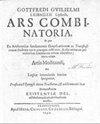Further Results on Radio Number of Wedge sum of Graphs
4区 数学
Q4 Mathematics
引用次数: 0
Abstract
Let \(G\) be a simple connected graph with vertex set \(V\) and diameter \(d\). An injective function \(c: V\rightarrow \{1,2,3,\ldots\}\) is called a {radio labeling} of \(G\) if \({|c(x)-c(y)|+d(x,y)\geq d+1}\) for all distinct \(x,y\in V\), where \(d(x,y)\) is the distance between vertices \(x\) and \(y\). The largest number in the range of \(c\) is called the span of the labeling \(c\). The radio number of \(G\) is the minimum span taken over all radio labelings of \(G\). For a fixed vertex \(z\) of \(G\), the sequence \((l_1,l_2,\ldots,l_r)\) is called the level tuple of \(G\), where \(l_i\) is the number of vertices whose distance from \(z\) is \(i\). Let \(J^k(l_1,l_2,\ldots,l_r)\) be the wedge sum (i.e., one vertex union) of \(k\geq2\) graphs having same level tuple \((l_1,l_2,\ldots,l_r)\). Let \(J\left(\frac{l_1}{l'_1},\frac{l_2}{l'_2},\ldots,\frac{l_r}{l'_r}\right)\) be the wedge sum of two graphs of same order, having level tuples \((l_1,l_2,\ldots,l_r)\) and \((l'_1,l'_2,\ldots,l'_r)\). In this paper, we compute the radio number for some sub-families of \(J^k(l_1,l_2,\ldots,l_r)\) and \(J\left(\frac{l_1}{l'_1},\frac{l_2}{l'_2},\ldots,\frac{l_r}{l'_r}\right)\).图的楔形和的无线电数的进一步结果
设\(G\)为一个顶点集\(V\),直径\(d\)的简单连通图。对于所有不同的\(x,y\in V\),一个内射函数{}\(c: V\rightarrow \{1,2,3,\ldots\}\)被称为\(G\)的,如果\({|c(x)-c(y)|+d(x,y)\geq d+1}\),其中\(d(x,y)\)是顶点\(x\)和\(y\)之间的距离。在\(c\)范围内最大的数称为标注的跨度\(c\)。\(G\)的无线电号码是\(G\)的所有无线电标签所占用的最小跨度。对于\(G\)的一个固定顶点\(z\),序列\((l_1,l_2,\ldots,l_r)\)被称为\(G\)的层次元组,其中\(l_i\)是到\(z\)的距离为\(i\)的顶点的个数。设\(J^k(l_1,l_2,\ldots,l_r)\)为具有相同级别元组\((l_1,l_2,\ldots,l_r)\)的\(k\geq2\)图的楔形和(即一个顶点并集)。设\(J\left(\frac{l_1}{l'_1},\frac{l_2}{l'_2},\ldots,\frac{l_r}{l'_r}\right)\)为两个具有级别元组\((l_1,l_2,\ldots,l_r)\)和\((l'_1,l'_2,\ldots,l'_r)\)的同阶图的楔形和。本文计算了\(J^k(l_1,l_2,\ldots,l_r)\)和\(J\left(\frac{l_1}{l'_1},\frac{l_2}{l'_2},\ldots,\frac{l_r}{l'_r}\right)\)的一些子族的无线电数。
本文章由计算机程序翻译,如有差异,请以英文原文为准。
求助全文
约1分钟内获得全文
求助全文
来源期刊

Ars Combinatoria
数学-数学
CiteScore
0.30
自引率
0.00%
发文量
0
审稿时长
5 months
期刊介绍:
Information not localized
 求助内容:
求助内容: 应助结果提醒方式:
应助结果提醒方式:


